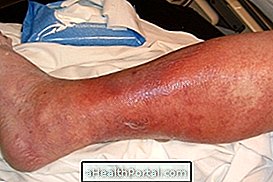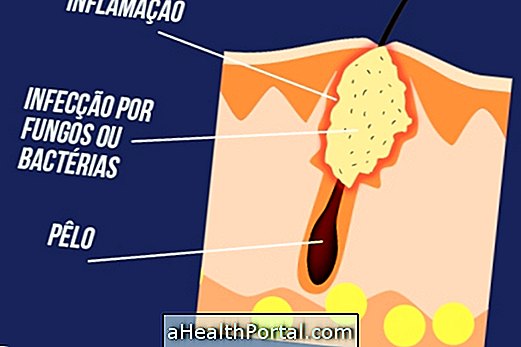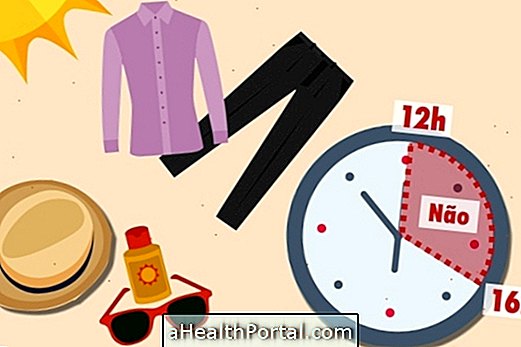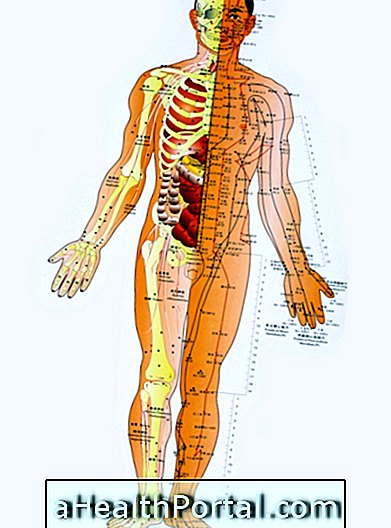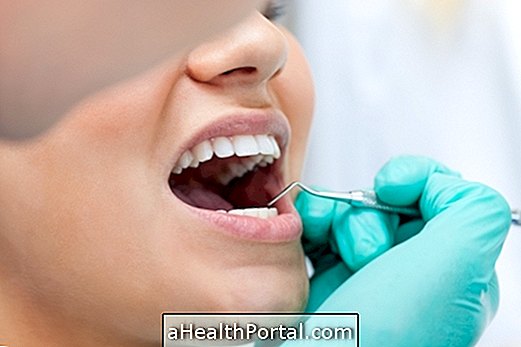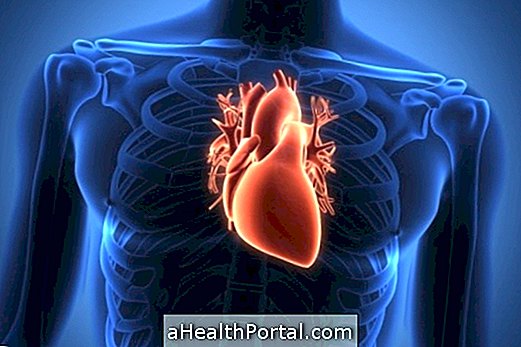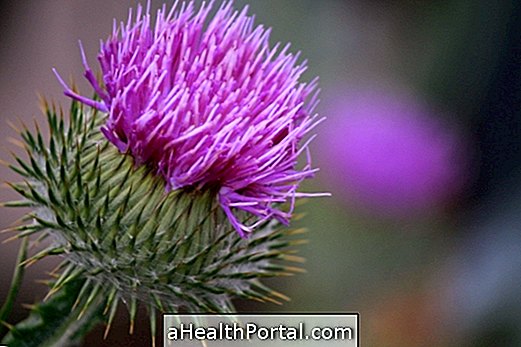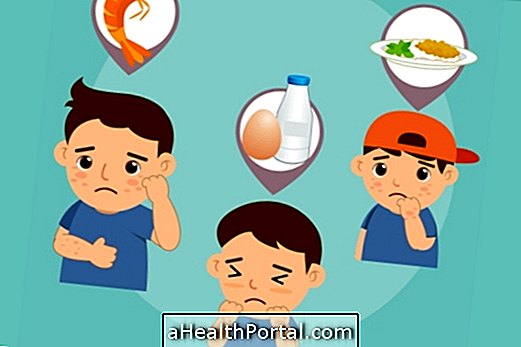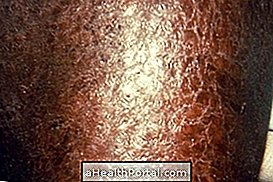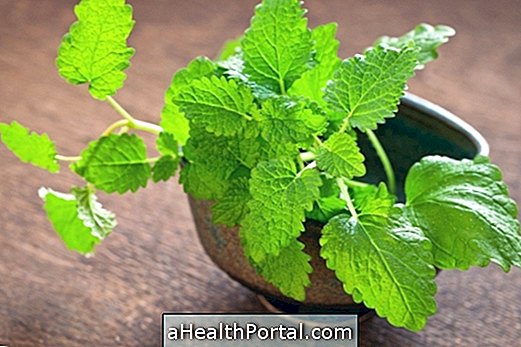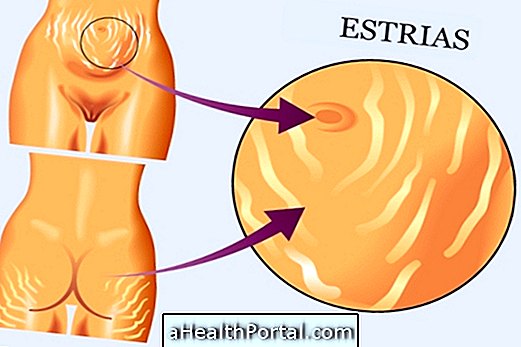The abscess is a small elevation of the skin characterized by the presence of pus, redness and local temperature increase. Usually the abscess is caused by bacterial infection and can arise in any part of the body.
The abscess may be visible on the skin or develop inside the body, called the internal abscess, such as the brain abscess, for example, which is harder to identify.
Diagnosis is usually made by observing the person's abscess and symptoms. Usually the abscess is drained naturally, but if it is large and causes pain and a high fever, drainage should be performed by the doctor in your office. In addition, because it is a bacterial infection most of the time, the doctor may indicate the use of antibiotic to eliminate the bacteria. A natural way to treat the abscess is through the clay poultice, which speeds up the healing process of the abscess. See how the natural remedy for abscess is made.
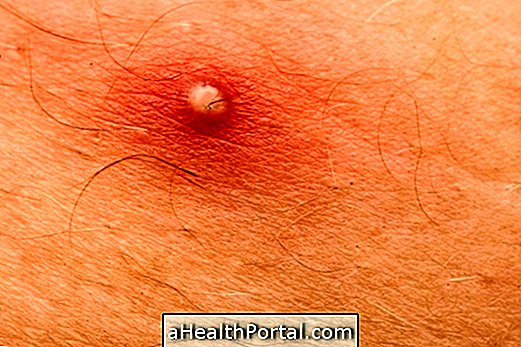
Main types
The abscess can appear in several parts of the body and the main types are:
- Anal abscess: This type of abscess is caused by bacterial infection that leads to the formation of a pus-filled cavity around the anal region that causes pain when sitting or evacuating, for example. The treatment is done by the surgeon through the drainage of the abscess. Learn how to identify how to treat anal abscess;
- Periodontal Abscess: Periodontal abscess is characterized by the presence of a pus pocket in the gum near the root of the tooth and is usually caused by infections;
- Tooth abscess: This abscess can happen due to an untreated caries, injury or poorly executed dental work, which allows the entry of bacteria, for example. Treatment is usually done by the dentist through drainage of the abscess and use of antibiotics. However, in more severe cases, it may be recommended by the dentist to extract the tooth that has been affected. Understand what dental abscess is and what to do;
- Axillary Abscess: Axillary abscess is usually the result of folliculitis, which is the inflammation of the hair root. The treatment is done with compress of warm water and is indicated not to scratch;
- Vaginal abscess: The vaginal abscess is caused by inflammation of the Bartholin's gland, which is a gland located in the anterior region of the vagina that has the function of lubricating it. Learn how to treat inflammation of the Bartholin gland.
- Brain abscess: This abscess is rare and is due to the presence of bacteria in other regions of the head or the bloodstream that reach the brain, leading to abscess formation. Treatment is usually done with the use of antibiotics and surgery to drain the abscess.
- Pulmonary abscess: Pulmonary abscess is identified by chest X-ray and may be caused by the presence of bacteria that live in the mouth and reach the lungs. This abscess can cause symptoms such as tiredness, loss of appetite and fever.
Abscesses appear more often in people who have low immunity due to diseases such as AIDS and cancer, chemotherapy, drug use or ulcerative colitis, for example.
To avoid abscesses it is important to wash your hands thoroughly, avoid sharing towels and have a balanced diet, thus avoiding infections.
Symptoms of abscess
The abscess has very characteristic symptoms, such as redness around the abscess, pain, swelling, increased temperature in the area and presence of pus in the abscess. In addition, the presence of the abscess can lead to nausea, chills and high fever, and it is recommended to seek medical help if these symptoms occur.
Abscess is most often the result of bacterial infections, in which the immune system initiates the inflammatory response due to the presence of bacteria. However, abscess can also occur due to obstruction in glands or ingrown joints, which is the case of folliculitis, where there is inflammation in the root of the hairs, leading to the appearance of small blisters with pus that can cause burning and itching. Find out what it is and how to treat folliculitis.
How is the treatment done?
The treatment for the abscess is done according to the doctor's advice and the use of antibiotics is usually indicated with the aim of eliminating or avoiding bacterial infections. In addition, drainage of the abscess, which must be done by the doctor, may be necessary.
It is contraindicated to perform drainage at home, as there is a greater chance of exposure to microorganisms, and may worsen the condition. It is also advisable not to tighten the abscess, as this can carry the pus, which contains bacteria, into the tissue, aggravating the infection.
One of the home options for treating the abscess is to put compress with warm water and clean the area with neutral soap. An herbal poultice may also be applied to the abscess, which aims to accelerate the healing process and decrease the risk of infection.



